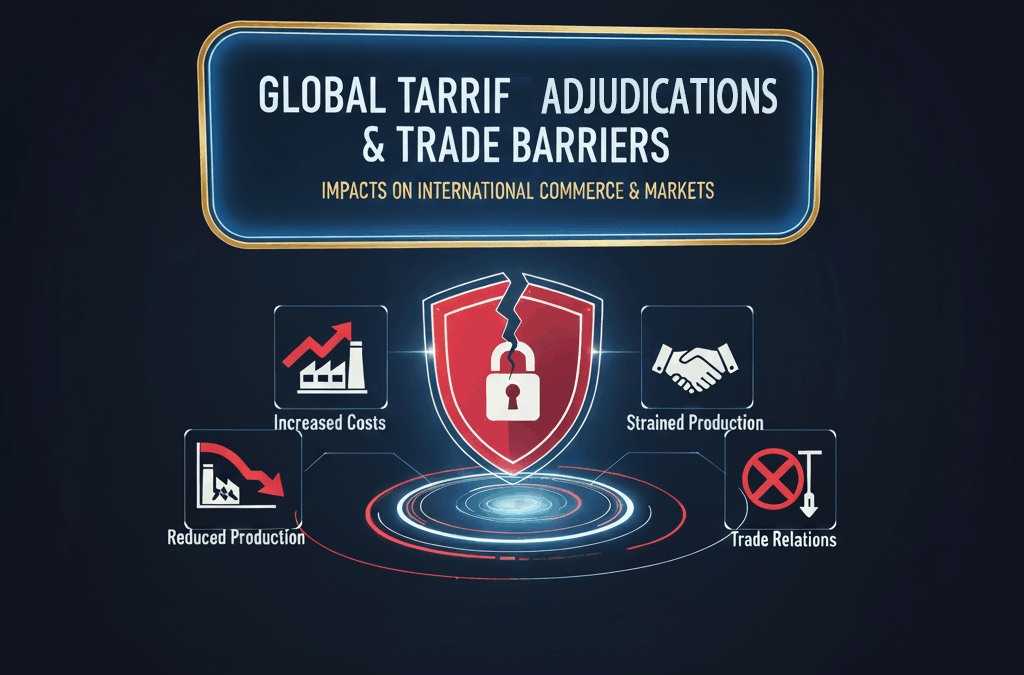When Trade Winds Shift, Smart Companies Adjust Their Sails :
International trade continues to evolve rapidly, with tariffs and new regulations reshaping how businesses approach global commerce. For companies engaged in cross-border operations, these changes often appear as obstacles rather than opportunities. However, organizations that understand how to navigate regulatory complexity can discover competitive advantages that strengthen their market position.
Total Transport recognizes that businesses need more than just compliance—they need strategic approaches that transform regulatory challenges into growth opportunities. This comprehensive guide explores how companies can develop systems, processes, and partnerships that not only manage trade complexities but leverage them for competitive benefit.
The key lies in shifting perspective from viewing tariffs and regulations as barriers to understanding them as market signals that inform better business decisions.
Understanding Tariffs and New Regulations in Global Trade
The Current Landscape of Trade Complexity
Modern international trade faces unprecedented regulatory complexity. Governments worldwide are implementing new trade policies, updating customs procedures, and adjusting tariff structures to address economic, environmental, and security concerns. This evolution affects everything from product classifications to documentation requirements.
For businesses involved in international commerce, understanding this regulatory environment becomes crucial for operational success. Rather than viewing these changes as obstacles, forward-thinking companies recognize them as information sources that can guide strategic decision-making.
Types of Regulatory Changes Affecting Trade
Tariff Modifications
Tariff rates change frequently due to trade negotiations, policy updates, and economic conditions. These changes can affect product costs, market competitiveness, and supply chain optimization decisions.
Customs Procedure Updates
Modernization efforts by customs authorities introduce new documentation requirements, inspection protocols, and clearance processes. Staying current with these updates ensures smooth operations and prevents delays.
Trade Agreement Changes
New free trade agreements, expired deals, and updated rules of origin can significantly impact market access and duty calculations, creating both challenges and opportunities for businesses.
Identifying Opportunities Within Regulatory Complexity
Market Intelligence Through Policy Analysis
Regulatory changes often signal broader economic trends and market opportunities. Businesses that systematically monitor policy developments can identify emerging markets, understand competitive dynamics, and anticipate supply chain needs.
Key Areas to Monitor:
- Changes in duty rates on specific product categories
- New trade agreement implementations
- Updated compliance requirements for targeted industries
- Shifts in customs inspection priorities
Competitive Advantage Through Compliance Excellence
Companies that develop superior compliance capabilities often discover that regulatory adherence becomes a competitive differentiator. This excellence creates multiple business benefits, including reduced delays, improved supplier relationships, and enhanced customer confidence.
Strategic Benefits of Strong Compliance:
- Faster customs clearance times
- Reduced risk of penalties and delays
- Better supplier and partner relationships
- Enhanced operational predictability
- Improved cash flow management
Supply Chain Optimization Opportunities
Tariffs and regulations encourage businesses to evaluate their supply chain structures critically. This analysis often reveals opportunities for consolidation, regional sourcing, and inventory optimization that generate both cost savings and operational improvements.
Practical Strategies for Businesses
Developing a Systematic Approach to Regulatory Monitoring
Establish Information Sources
Create reliable channels for monitoring trade policy changes through customs authorities, trade associations, and industry publications. This systematic approach ensures timely awareness of relevant developments.
Implement Regular Review Processes
Schedule consistent evaluations of how regulatory changes affect current operations, planned shipments, and strategic objectives. This regularity prevents reactive responses to policy surprises.
Create Cross-Functional Communication Systems
Ensure that procurement, logistics, sales, and finance teams share information about regulatory impacts. This collaboration enables comprehensive strategic responses rather than isolated departmental adjustments.
Building Flexible Supply Chain Models
Diversify Sourcing Options
Maintain relationships with suppliers in multiple regions to reduce dependency on single markets and increase leverage during trade negotiations.
Design Modular Inventory Strategies
Structure inventory management systems that can quickly adjust to regulatory changes, enabling rapid response to new opportunities or challenges.
Develop Alternative Routing Capabilities
Establish partnerships with multiple transportation providers and route options to maintain flexibility when regulatory changes affect primary pathways.
Leveraging Technology for Compliance Management
Implement Trade Compliance Software
Modern systems can track tariff changes, manage documentation requirements, and automate compliance processes. This technology reduces manual effort while improving accuracy.
Utilize Data Analytics
Analyse historical trade data to identify patterns, predict regulatory impacts, and optimize decision-making processes.
Integrate Systems
Connect compliance software with ERP, WMS, and transportation management systems to create seamless information flow and reduce duplicate efforts.
Leveraging Expert Support for Strategic Advantage
The Value of Specialized Knowledge
Navigating trade regulations requires expertise that combines legal knowledge, operational experience, and industry understanding. Working with experienced professionals accelerates learning curves and reduces costly mistakes.
Benefits of Expert Partnerships:
- Access to specialized knowledge and experience
- Reduced implementation time for new processes
- Risk mitigation through professional guidance
- Strategic insights based on industry best practices
Custom Solutions for Specific Industry Needs
Different industries face unique regulatory challenges based on product types, source countries, and market destinations. Expert support can provide tailored approaches that address specific business requirements rather than generic compliance solutions.
Long-term Strategic Planning
Experienced professionals help businesses develop long-term strategies that account for regulatory trends and market evolution, enabling proactive rather than reactive approaches to trade challenges.
Conclusion and Next Steps
Successfully navigating tariffs and new regulations requires shifting from viewing them as obstacles to recognizing them as strategic opportunities. Businesses that develop systematic approaches to regulatory monitoring, build flexible operational models, and leverage expert support often discover competitive advantages that enhance their market position.
The key transformation occurs when companies move beyond basic compliance to strategic regulatory management. This shift enables organizations to identify market opportunities, optimize supply chains, and build sustainable competitive advantages through superior trade execution.





Recent Comments